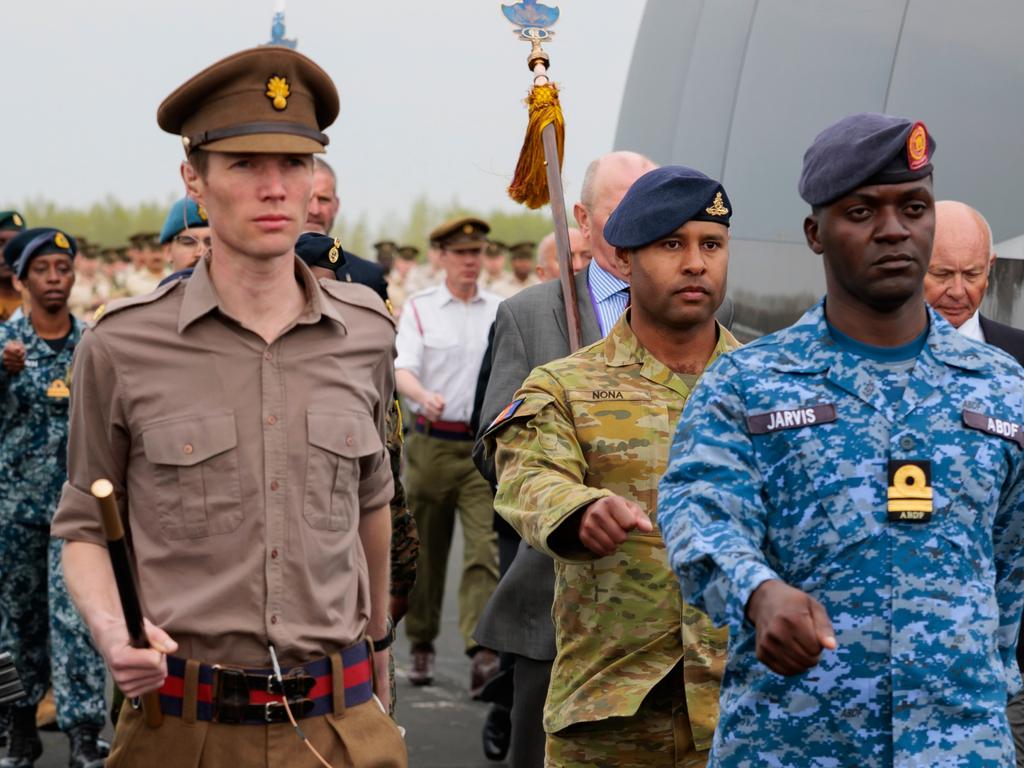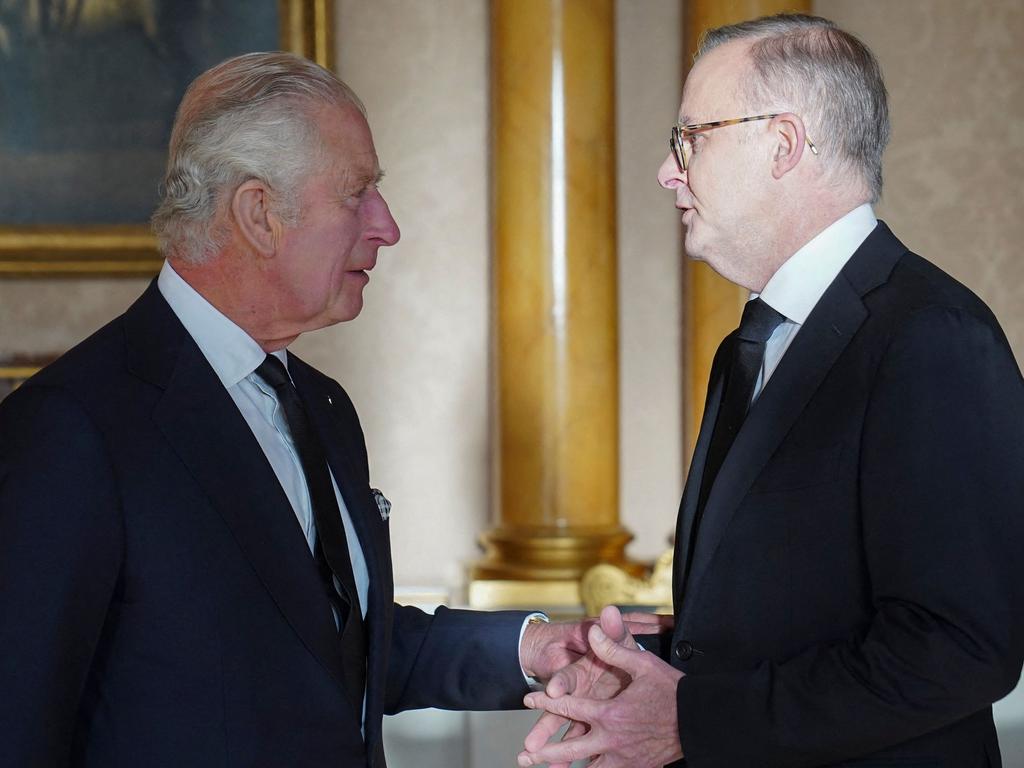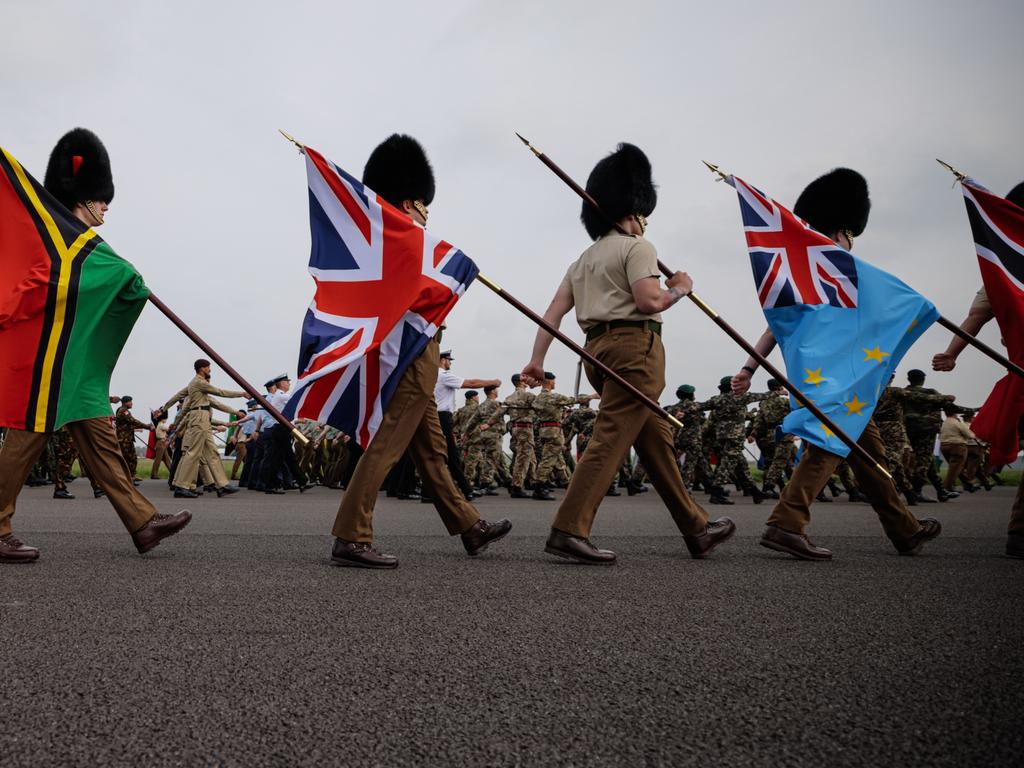The Queen and I: how Jackie Kennedy saw Elizabeth II coronation
In 1953, the young reporter Jacqueline Bouvier travelled to England to cover Elizabeth II’s coronation.

Among the high-society visitors arriving in style for the coronation aboard the SS United States was a young newspaper correspondent aiming to capture the excitement gripping Britain for a US audience, Jacqueline Bouvier. The 23-year-old, who at the time was dating John F Kennedy, the dashing senator for Massachusetts – they would marry just months later – travelled on the fastest ocean liner to cross the Atlantic to record her impressions as people flocked to London for the crowning of Elizabeth II on June 2, 1953.
Her reports for the now defunct Washington Times-Herald, discovered in microfilm archives in the US capital, paint a picture of a once-in-a-lifetime spectacle: troops from Commonwealth countries camped out in royal parks, lavishly decorated buildings and reproductions of the young Queen’s face everywhere.
“The whole country is concerned with the coronation, the whole coronation and nothing but the coronation,” the young correspondent wrote in her main dispatch published on the big day. “Every home one could see through the windows of the boat train between Southampton and London bore a picture of Queen Elizabeth pasted on the outside of the house or in a window.”
Bouvier arrived on the five-day “coronation crossing” bringing American celebrities such as Walter Cronkite, the revered CBS News anchorman ("who does a mean Mexican hat dance"), the jeweller Louis Arpels and the Duke and Duchess of Windsor (the former King Edward VIII and his wife, Wallis Simpson), who disembarked at Le Havre to avoid the coronation.
“Passengers stare at the Duke, aware that if he had not abdicated they would not be sailing to the coronation of his niece,” Bouvier wrote. “Sometimes children ask for autographs which he gives cheerfully.”

Once she finally made it to the British capital, Bouvier found herself swept away by the jubilant atmosphere. London had “not looked this beautiful since the coronation of Elizabeth’s father King George”, she wrote. “Every building is decorated. Great sweeps of multi-coloured bunting adorn all the big hotels like the Savoy, and department stores like Harrods and in the smaller shops pictures of Her Majesty are displayed.”
Trying to navigate the congested streets, she is told by a cabbie: “Everybody’s so good natured now. I was telling my missus we should have something like this every year.”
Watching Changing the Guard at Buckingham Palace, Bouvier, whose engagement to JFK would be announced later that month, reported catching a glimpse of the four-year-old Prince Charles peeking out from behind a curtain, sharing the excitement of the crowds.
The larger Commonwealth nations provided troops for the time-honoured ceremony. Bouvier wrote that the Mounties were the children’s favourite; they were encamped in Hyde Park opposite the Household Cavalry barracks and “graze their well-groomed black horses underneath the trees”.
Drawn to the Dorchester Hotel, its facade decorated to look like theatre boxes with “pale blue balconies with purple and gold draperies”, Bouvier heard a snippet of conversation that she was keen to share: “One woman turned to another and said, ‘No, darling, let’s lunch at Claridge’s. That’s where all the deposed monarchs are staying.’ ”


Bouvier wrote about how she had visited the Coliseum Theatre for Guys and Dolls – attended by the 22-year-old Princess Margaret – and partied at the 400 Club, “a tiny private nightclub in Mayfair”. Among those “attempting to dance on the postage-stamp size dance floor were the Marquess of Milford Haven, the Marquess of Blandford … and the Maharaja of Jaipur”.
Bouvier interviewed one of the team of ladies-in-waiting helping the Queen to prepare, who said they were planning an early night. “They have to be in Westminster Abbey by 6.30am Tuesday and their hairdressers arrive at the Palace to fix their hair at 3am – ‘We wear a tiara, you know, and that takes a bit of arranging.’ ”
The unnamed lady-in-waiting divulged one of the secrets of the ceremony to the intrepid American reporter. “A secret mark has been placed on the crown of St Edward. This is to enable the Archbishop of Canterbury to distinguish between front and back when he crowns the Queen. He has no intention of making a mistake this time. In 1937, when the Archbishop crowned King George VI, he placed the crown on backwards.”

Bouvier was not one of the lucky ones to get a seat in the abbey and instead circulated in the huge crowd outside Buckingham Palace to record the views of “the man on the street” for her final reports. Lawrence Toogood, a labourer from Peckham, told her that he helped to install some of the decorations at Piccadilly Circus. “It’s a lovely sight. It ought to be permanent,” he said, adding that he was also enjoying the overtime pay of seven and fourpence an hour.
She talked to Norman Waters, a navy steward from South Shields helping to line the route of the Gold State Coach. “We’ve been training standing there for long periods of time with nothing to eat,” he said. “Some of the lads got taken to the sickbay. Not me, though. This is my first trip to London. I’m standing till I drop.”
Hilda Alderman, a housewife from South Ruislip, recalled: “Nobody was so excited at the last coronation. Royalty is closer to the people now than what they were in the olden days.”
Bouvier found that most of the Brits she met were enthralled by their new Queen.

Barbara Banks, a student at Royal Holloway College in London, said: “We won’t see another queen. I think it’s nice to have a queen for a change. We’ve definitely had our best times under our queens. Anything new encourages a new spirit and the people. She’s young. That’s why she means so much to young people. She’s representing us more than anything and we’ll grow old along with her.”
Jacqueline Bouvier would be back at Buckingham Palace exactly eight years later – for dinner, as a guest of the queen whose coronation she had reported on so breathlessly. Impossible to imagine at the time of her youthful observations from outside the palace railings that, the next time she came to London, crowds would gather to catch a glimpse of the youngest elected American president and his glamorous first lady, hailed as the closest the US came to matching the allure of British royalty.
The Times




